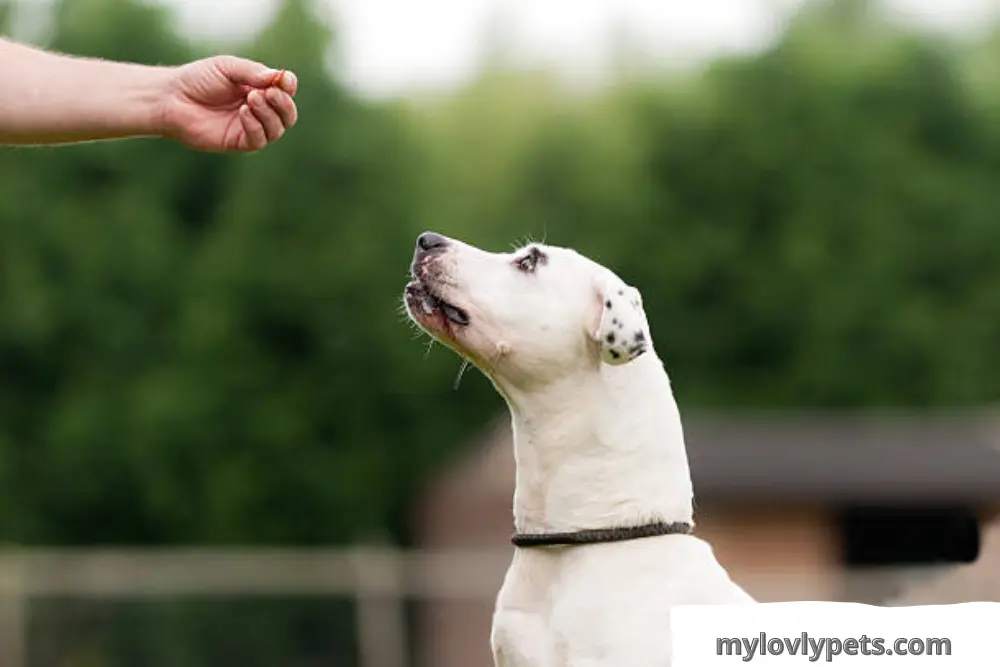
What is Balanced Dog Training? What Is Right And Wrong
There are lots of new balanced dog trainers emerging every day. But what is balanced dog training? What does “balanced” dog training actually entail?
A well-rounded strategy for shaping your dog’s behavior through training. The four corners of the basic learning theory diagram are the areas of reinforcement (positive and negative), and punishment (positive and negative).
Simply put, “Balanced Dog Training” describes any method of canine behavioral change that makes use of both positive reinforcement and negative consequences. To put it another way, the trainer demonstrates to the dog that their actions and behaviors can have positive or negative outcomes.
What is Balanced Dog Training?
What is balanced dog training? Using positive reinforcement and well-timed corrections to train a dog sends a very clear message.
Like any positive trainers, balanced trainers reward good behavior, provide rewards to deter bad conduct, and ignore unwanted behavior. However, balanced trainers also offer your dog an additional training method. They teach the dog both “yes” and “no,” unlike all-positive trainers. By teaching your dog the “yes” and “no” commands, you’re providing him with more opportunities to learn. We teach “yes” and “no” by pairing “yes” with a positive reinforcement and “no” with a “correction,” which is a negative reinforcement. When teaching dogs, balanced trainers apply operant conditioning.
Principles of Operant Conditioning
Positive Reinforcement, Negative Reinforcement, Positive Punishment, and Negative Punishment are the four corners of learning that make up Operant Conditioning. Before we move on, we need to explain what these words mean.
Positive implies the addition of something.
Negative implies the removal of something.
Reinforcement is a strategy to improve behavior.
The goal of punishment is to reduce behavior.
Positive Reinforcement Training

Dogs are motivated by rewards (whether they be treats or toys). In positive reinforcement training, the dog is rewarded for good behavior with food, attention, or other items that the dog enjoys. You may shape or change your dog’s behavior with the help of positive reinforcement, one of your most effective tools.
Giving your dog a treat when it behaves is as easy as it sounds. But for the technique to work well, you need to follow a few basic rules.
Keep Things Short
To put it simply, canines are unable to comprehend human speech. Try saying, “Hay, I want you to be a good boy and sit for me now,” and see what happens. Canines pick up on our nonverbal cues before we even say a word to them, so you should work on getting your dog to “sit” or “down” before you even ask it to do so. To get your dog to sit, move your hand holding a reward or toy over and slightly behind its head. While your dog is in a sitting position, bring the treat down to the floor between its front paws.
It’s All About The Timing
Positive reinforcement is most effective when applied at the appropriate time. for your pet to make the connection between the good behavior and the subsequent reward, the reward must happen immediately. Dogs can be confused about what behavior they are being rewarded for, so it’s important to only give them treats after they’ve completed the desired action.
Consistency is Essential
Your dog will be less confused if everyone in the household uses the same signals. A list of cues might be posted so that everyone can learn them.
For balanced dog training to be consistent, rewards must be given only for the desired behavior.
Once your dog is regularly displaying the desired action, you can begin incorporating the command words “sit” or “down” using a quiet voice and without using the term too often. The verbal signals you give should be brief and straightforward.
Reward Types
Positive reinforcement can come in the form of treats, praise, petting, or a pet’s favorite toy or game. Food rewards are extremely effective for training as most canines are highly food motivated.
A treat for your pet should be tempting and hard to resist. Consider doing some trial and error to see which treats are most successful.
Make sure it’s a small, soft piece of food so they devour it quickly and expect more from you. Don’t offer your dog anything that breaks or falls apart.
Don’t give your dog the same reward every time, and instead keep a wide variety of snacks.
When you give a dog food as a reward, you should also praise it verbally (praise). Use an enthusiastic “yes” or “good dog.” Then give your pet a treat.
If your dog doesn’t respond as well to food treats, a toy, some petting, or a short game can be just as good.
Positive Reinforcement: The Good and The Bad

Methods based on positive reinforcement enhance desirable behaviors. Techniques are based on the idea that an animal’s emotional state controls its behavior. If you can figure out why your dog is acting a certain way, you can figure out how to teach it new, more desired habits. This method is great since it changes behavior without harming the animal.
If you set limits for your dog and enforce them consistently and explicitly, he will trust you more. Animals will follow a leader, not because they are scared of them. Positive reinforcement redirects and rewards good behavior, making the dog feel protected. Owners reinforce desired behaviors and disregard undesirable ones. No drama—just simple signals to the dog about which behaviors “work” and which don’t.
The bad thing is that it may take more time for positive reinforcement training to yield the desired benefits. It’s crucial to gradually reduce the number of food rewards given and to use a variety of real-world rewards. Food can be used as a training tool. No bribe should be used.
What is Positive Punishment When Training A Dog?
Many times, when we talk about punishment, what we mean is positive punishment. Punishment is something that makes it less likely for a behavior to happen again, which means the behavior happens less often. The word “positive” indicates the addition of something.
So, to reduce the frequency of a certain behavior, you would use positive punishment, which entails giving the dog something after it displayed that behavior.

A dog, for instance, can be difficult to walk since he tends to tug on his leash. The owner tightens his collar. When the dog pulls, the correction to its collar is painful, so it stops tugging to avoid the pain. Electronic confinement system training uses the same methodology. The dog forms an association between crossing that line and a painful experience.
When a dog is trained through positive punishment, the trainer reinforces bad behavior by giving the animal something unpleasant.
Positive Punishment Examples
Positive punishment comes in many forms, such as yelling at the dog, smacking the dog on the nose with a newspaper, using a citronella collar to halt barking (the collar sprays citronella in the dog’s face when it detects a bark), alpha rolls, in which the dog is forced to lie on their side or forced into a down position and held there after the owner didn’t like it, and prong collars
“Corrections” is a common term for a few of these. One common type of “leash correction” is to pull on the leash if a dog refuses to sit when instructed.
However, it is necessary to keep in mind that it is positive punishment. In other words, you still did something (pulling on the leash, which the dog feels on its neck) that made it less likely that the behavior would happen.
Positive Punishment – The Good and The Bad
The best thing about a training program with positive punishment is that it can stop bad behaviors fast. Dogs avoid actions and situations that cause them discomfort or undesirable results.

The bad thing is that positive punishment training is not behavior-based, so while it may be effective in reducing problem behaviors, it does nothing to get to the root of the problem. For example, a scared dog may growl when new people come into the house. A dog’s fear won’t go away, but growling can be stopped with a positive punishment program. The dog’s growl is his way of communicating fear and silencing this warning signal can be disastrous. A dog that is feeling defensive may bite without giving any prior warning.
Regular positive punishment can stop behaviors altogether. Because it’s too dangerous, the dog quits offering behaviors. No one, I hope, wants to stifle the dog’s unique character. Instead of learning to obey the owner’s words, the dog learns to obey in the presence of those objects.
Final Thought: What is Balanced Dog Training?
Pick a dog trainer who is not only qualified and dedicated to their career, but also takes pride in the fact that they use food as a training tool. Look elsewhere if they criticize the use of food as an incentive.
Because “balanced” dog training uses both rewards and corrections, which can cause fear and aggression in the dog. That seems unbalanced. It’s better to skip the painful part and just train your dog with treats.
So, instead of focusing on balance, let’s focus on food rewards.


